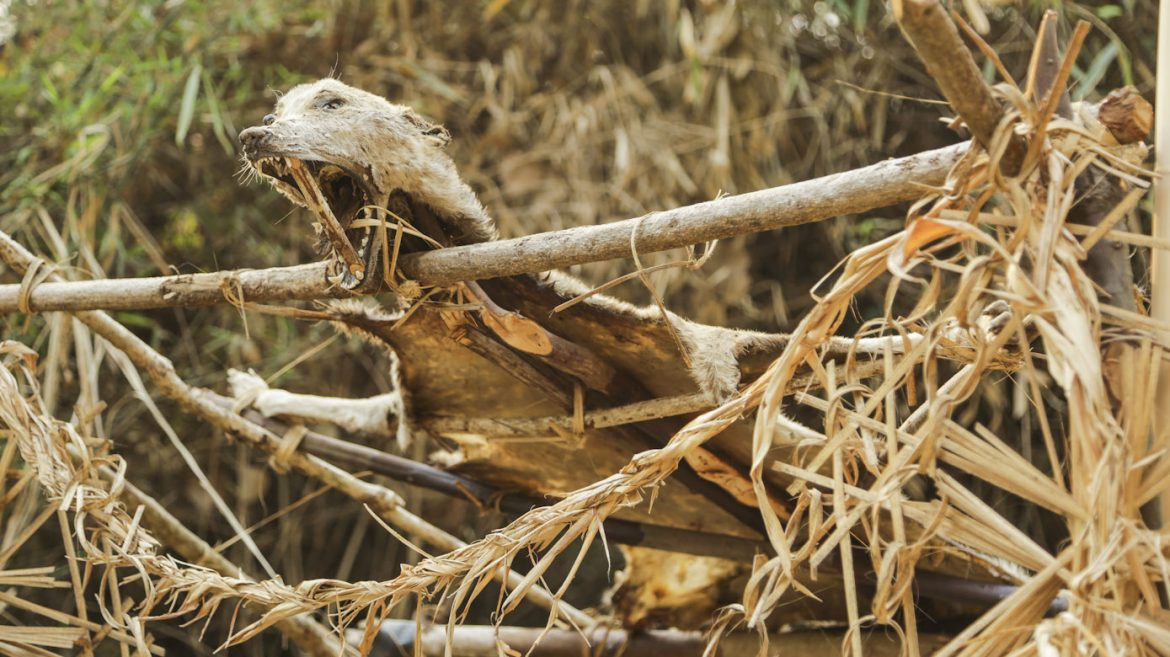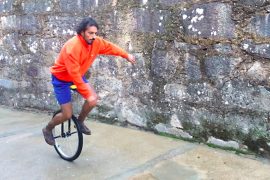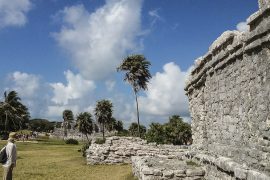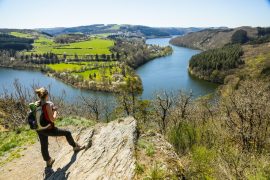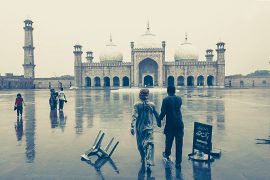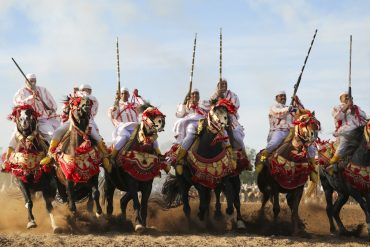Whenever we travel to a new country, it is always interesting to discover its obscure and bizarre side. Some of the unexpected facts have to do with history, others with culture and customs. Sometimes the unexpected arrives in the shape of food or art. Other times we are staggered by what is left to abandonement, renounced and forgotten. This is a list of these unusual and unexpected facts about Laos.
1. The Bizarre Buddha Park (Vientiane)
Expecting to find a series of golden Buddha (as we got used to seeing them represented in Buddhist temples), we were stunned by what we actually found at the Buddha Park. Locals call this park Xieng Khuan, which translates as “Spirit city”. The relatively small lawn-covered park is filled with more than 200 statues portraying both Buddhist and Hindu mythology, many of them looking more menacing and grotesque than serene.
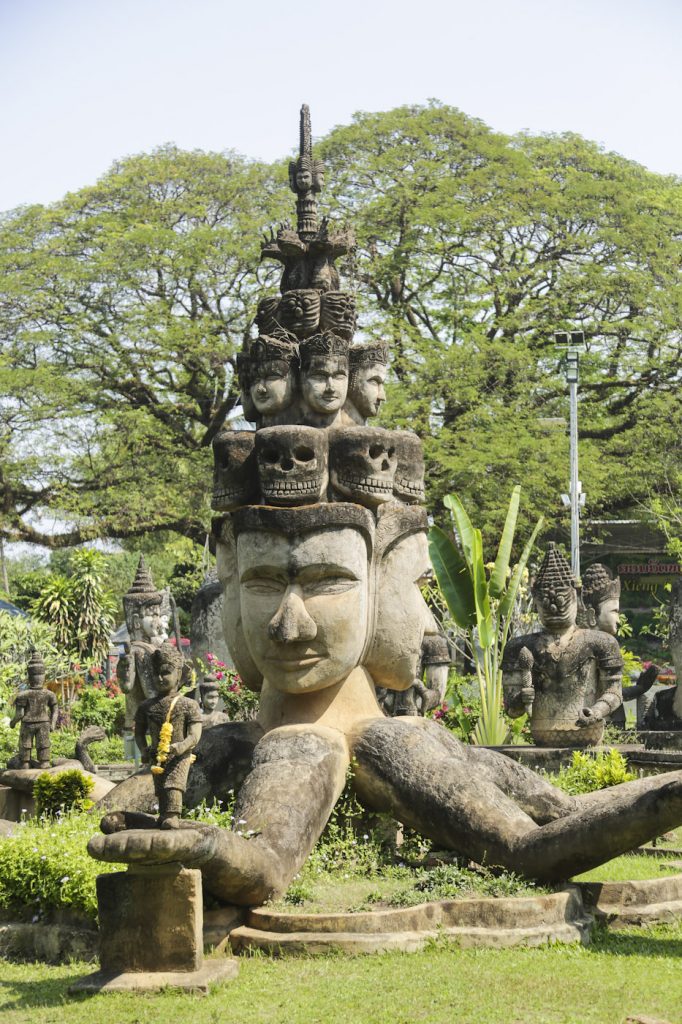
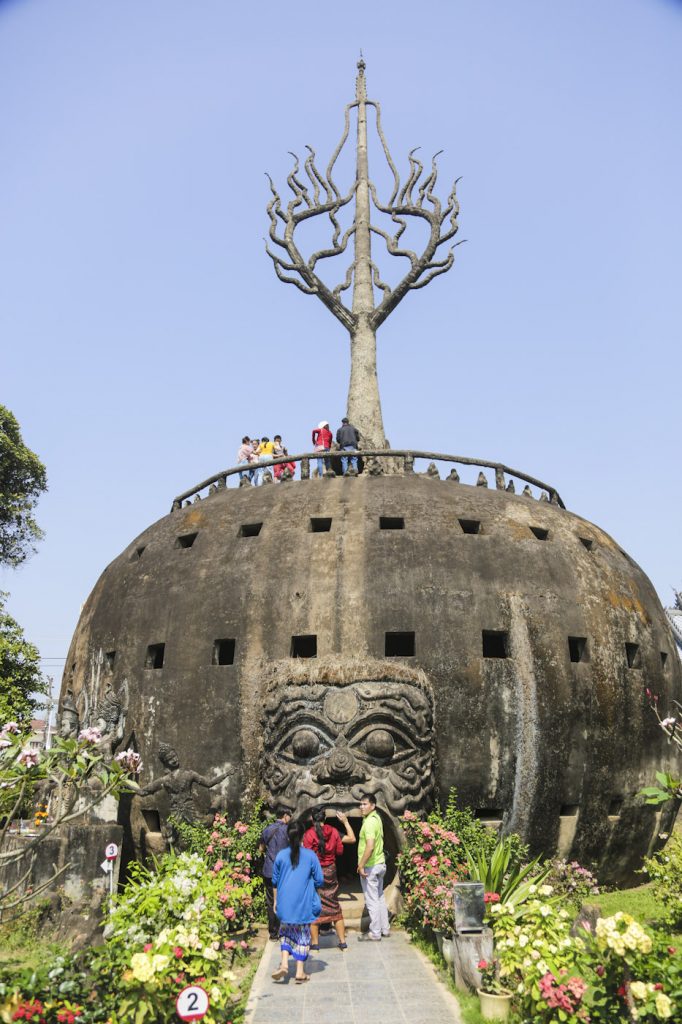
Even though the statues and sculptures look like they were made of carved stone, they are actually made of concrete and steel. Two of the sculptures stand out, if for no other reason, at least for their size.
>> Read more about the Buddha Park in Vientiane
One of them is the 40 metre long reclining Buddha, a long statue depicting Buddha in an almost sleepy position. A statue that you will find in any Buddhist country.
2. From Opium to Coffee and Tobacco Crops in the Golden Triangle
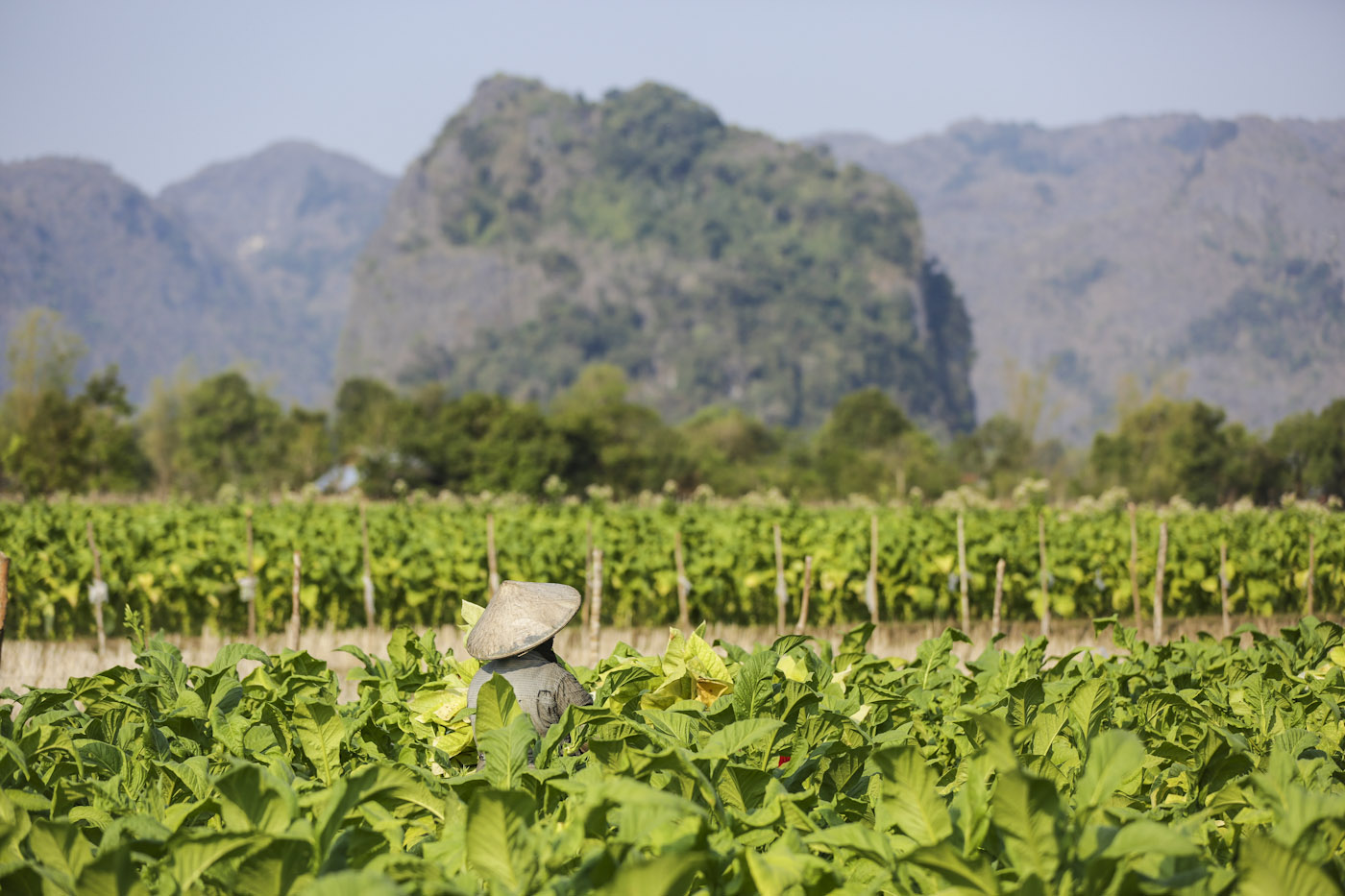
Laos is part of the infamous ‘Golden Triangle’, the second largest opium-producing area in the world, together with Thailand and Myanmar. The production of opium became a precious export with the rise of heroin consumption in America, in the 1960s. Unfortunately, consumpion inside the country also became a health issue. Therefore, poppy crops were prohibited in Laos in 2006, but the poorer farmers – without any other viable alternative – kept up the cultivation in secret. Since 2016, the United Nations Office on Drugs and Crime has been working with local communities to develop a programme that helps replace opium with coffee and tobacco plantations.
3. A Sad Dead Forest
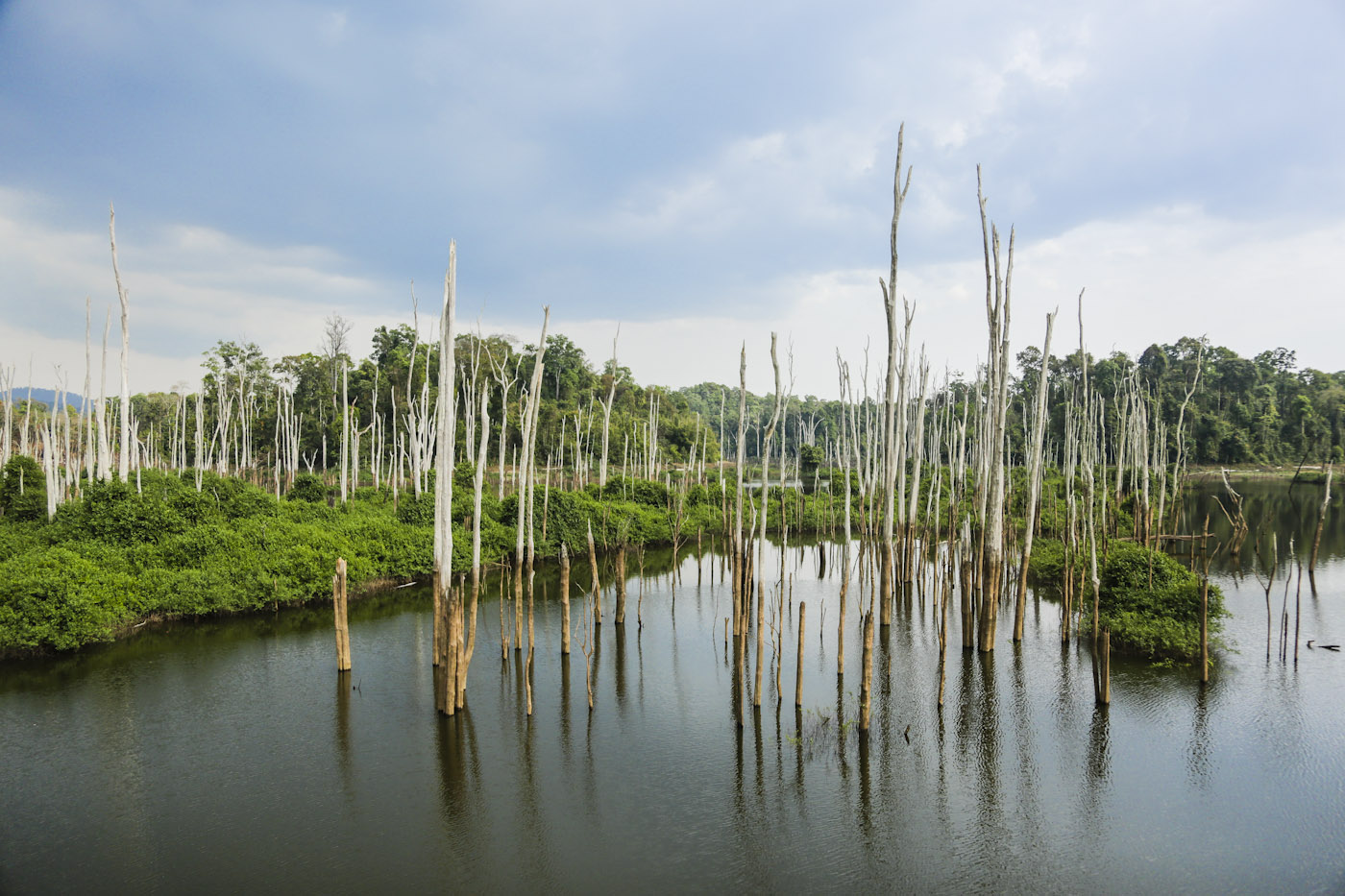
Hundreds of ghost silhouettes of dead trees rise from the waters near Nam Theun 2, a newly built dam, and one of the largest in Southeast Asia. Hydropower is Lao government’s big gamble. They export two-thirds of the power it generates, and its revenue is a significant part of the country’s economy. The dam was built in 2010, flooding the valley and sadly dislodging more than 30,000 locals.
4. Cock Fighting & Gambling – Forbidden but Allowed
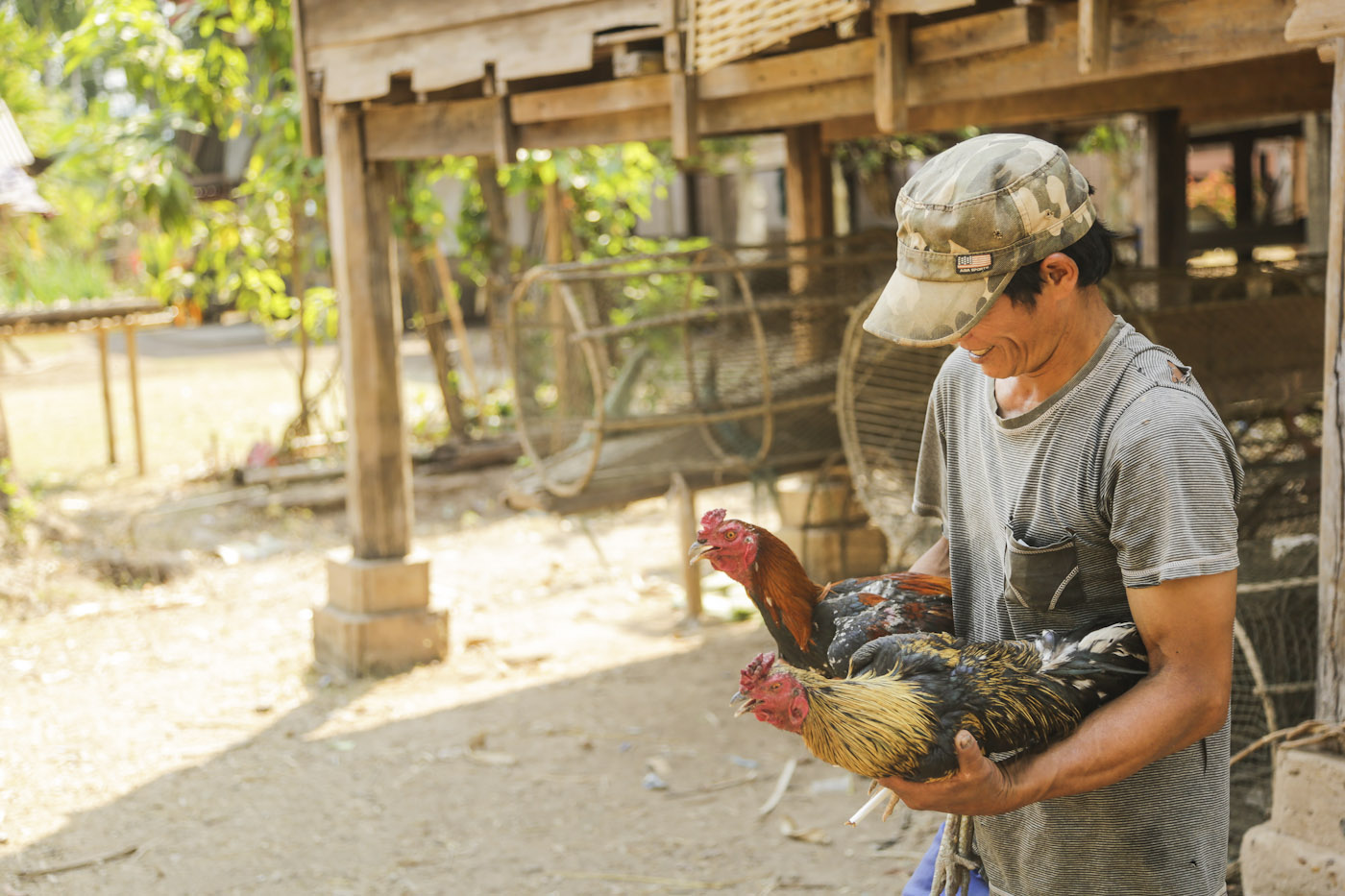
During a morning stroll in Don Kamao’s main village, this man walked up to us proudly exhibiting his two fighting cocks. Even though it was officially banned in the 1990s, cock fighting is still popular throughout Laos. The value of a prized rooster can reach 1,000 dollars, and that gives an indication of the amount of money a rooster owner can make when he owes a champion. Gambling is also prohibited, but we were told that Lao people love gambling and betting, and will bet on anything. The funniest thing we heard was that if they happen to see two stray dogs fighting, they will start betting and will follow the animals and their fight for as long as it takes to pinpoint a winner.
5. Unusual Rides on Bomb Boats
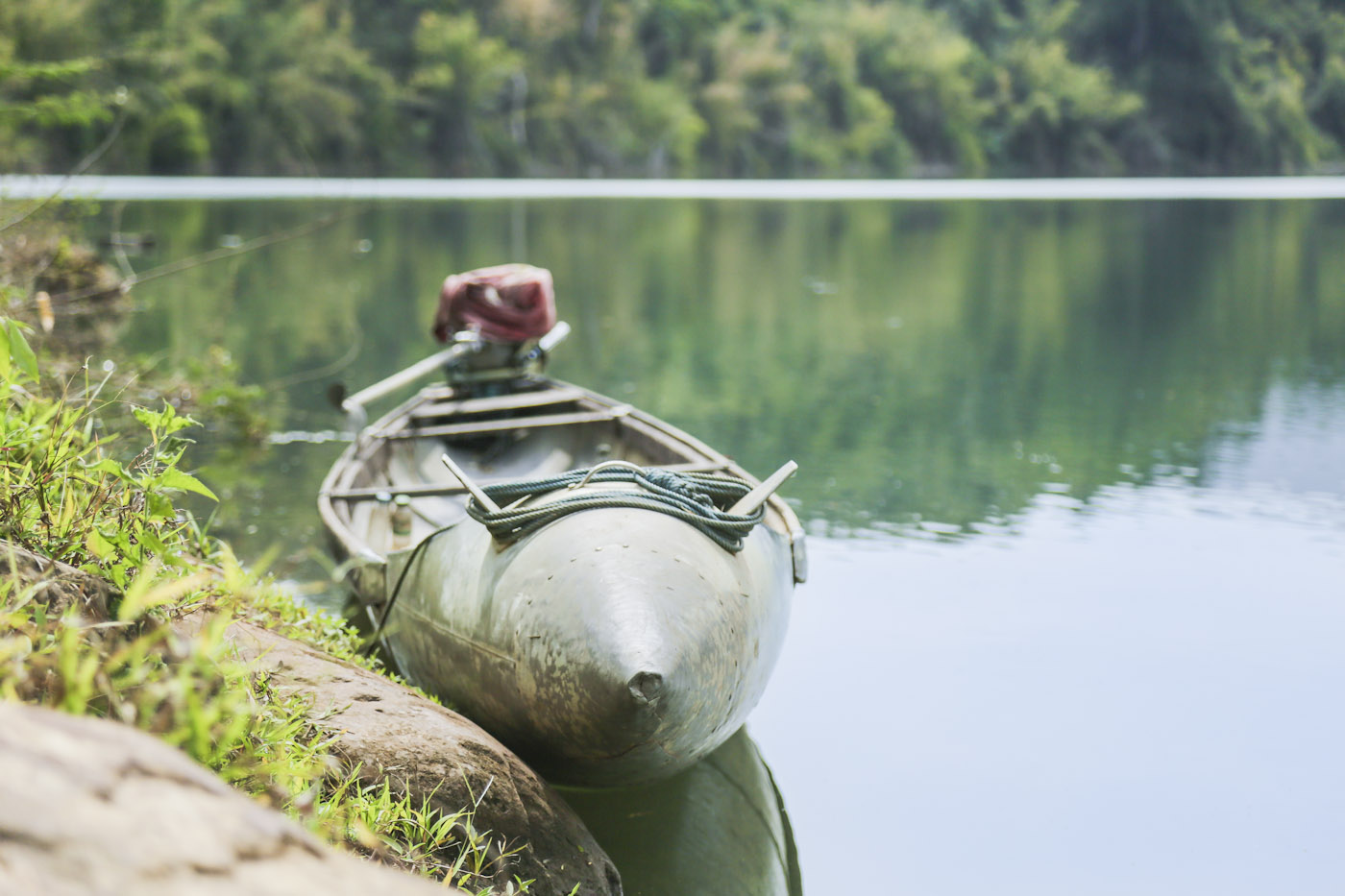
We were approaching the village of Tha Bak and immediately we saw the bridge over the Namkading river. It would be by looking down from the high bridge that we would find what we came from: the silver missile boats. Though the shape of the boats look like missiles, these were not bombs, these were martial material (ordnance), they were fuel tanks that were carried by several aircraft (Phantom F-4 for example) for refuelling. Many of these tanks would be jettisoned after use during the ‘secret war’. During the Vietnam war, the US have unofficially (hence the secret war) bombed Laos in order to destroy the Ho Chi Minh trail that passed through Laos, a supply line between North and South Vietnam. It was during this secret war, that lasted from 1964 to 1973, that Laos became the most bombed country in the world.
Villagers saw the potential in these ordnance, high quality scrap metal, and have been recycling them ever since. The ones that are intact get transformed into boats, and because of their shape are called bomb boats. It is possible to take a ride in one of them, through the Nam Kading National Park. All you have to do is ask one of the boat owners, down by the river margin, to take you on a tour.
6. Durian, the Forbidden Fruit inside Airplanes
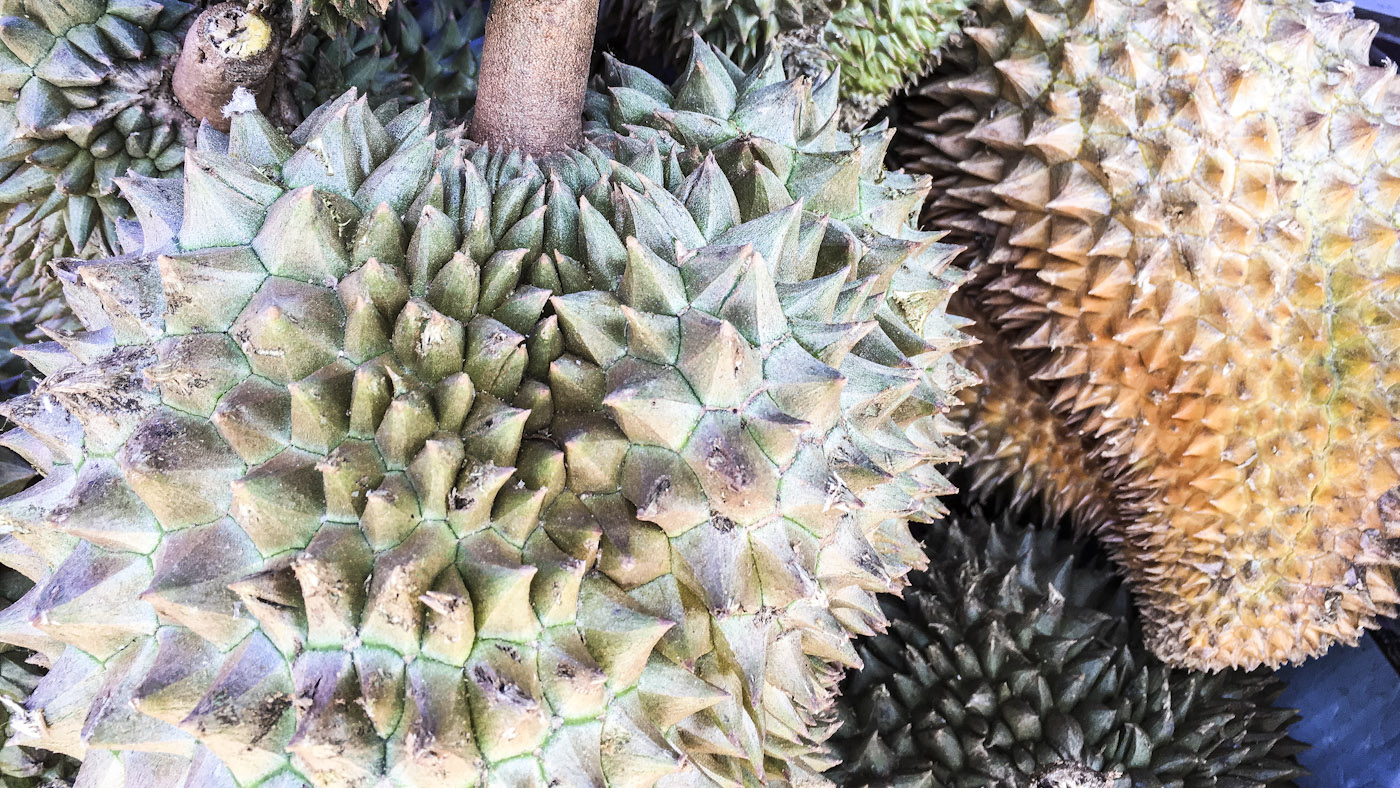
No other fruit polarises so many opinions and tastes as durian does! Either you love it or hate it. Durian has got a reputation for having a strong odour, and we dare say, it really smells bad! It is precisely because of that, that some airline companies do not allow passengers to carry durian in the cabin! Because they stink.
>> Read more about the different fruits of Southeast Asia
This particularity aside, the fruit is very nutrient and its looks are easily mixed up with jackfruit. The tree is native to Borneo and Sumatra and it does have many health benefits, including in the treatment of cancer.
7. COPE, a Museum that Displays Prosthesis
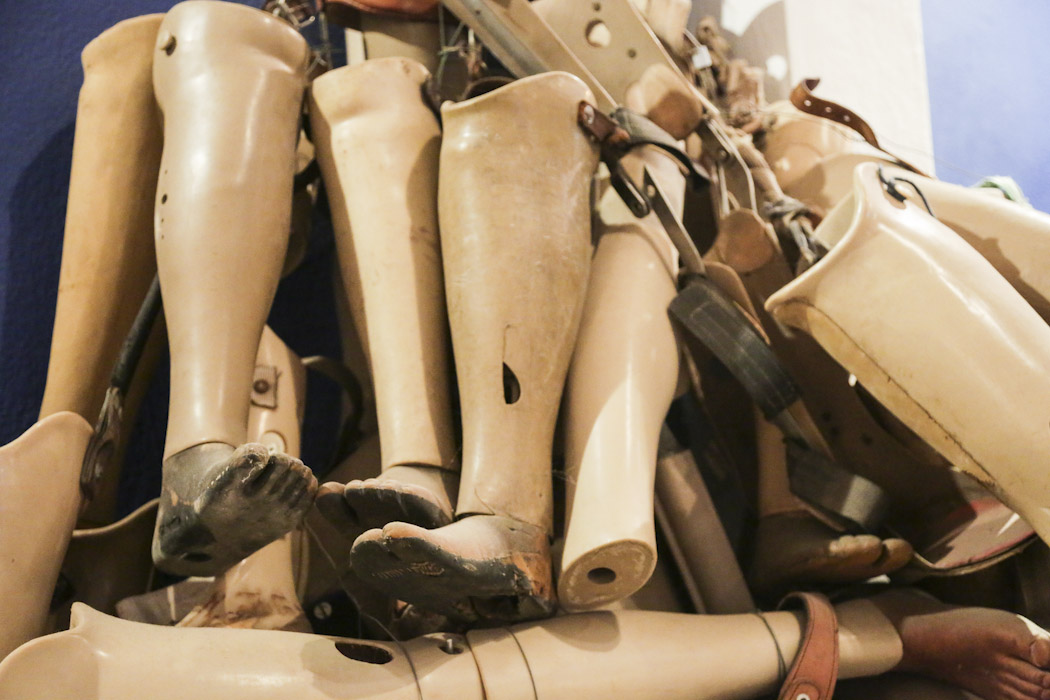
Laos owes the infamous title of being the most bombed country in the world. This happened during the secret war, that took place from 1964 to 1973, when the US tried to annihilate the Ho Chi Minh trail that passed through Laos. More than 580,000 bombing missions were carried out over Laos, an average of one bombing mission every eight minutes, 24 hours a day for nine consecutive years!
>> Read more about the COPE centre
Unfortunately, the 80 million bombies that failed to detonate remain on Lao’s ground ever since they fell! Another sad statistic shows that 25% of Lao villages are contaminated with UXO. Ever since the war finished, more than 20,000 people have been killed or injured by accidental explosions caused by all the bombies that are still in the ground. It is very difficult to spot the bombies, because they are either in the ground or are covered by vegetation. We’re talking about 80 million bombies, the size of tennis balls, in a field larger than 200,000 square metres. Clearance is still being done, and it is estimated that Laos will only be free of UXO in 20 years time.
8. Menacing Village Gates
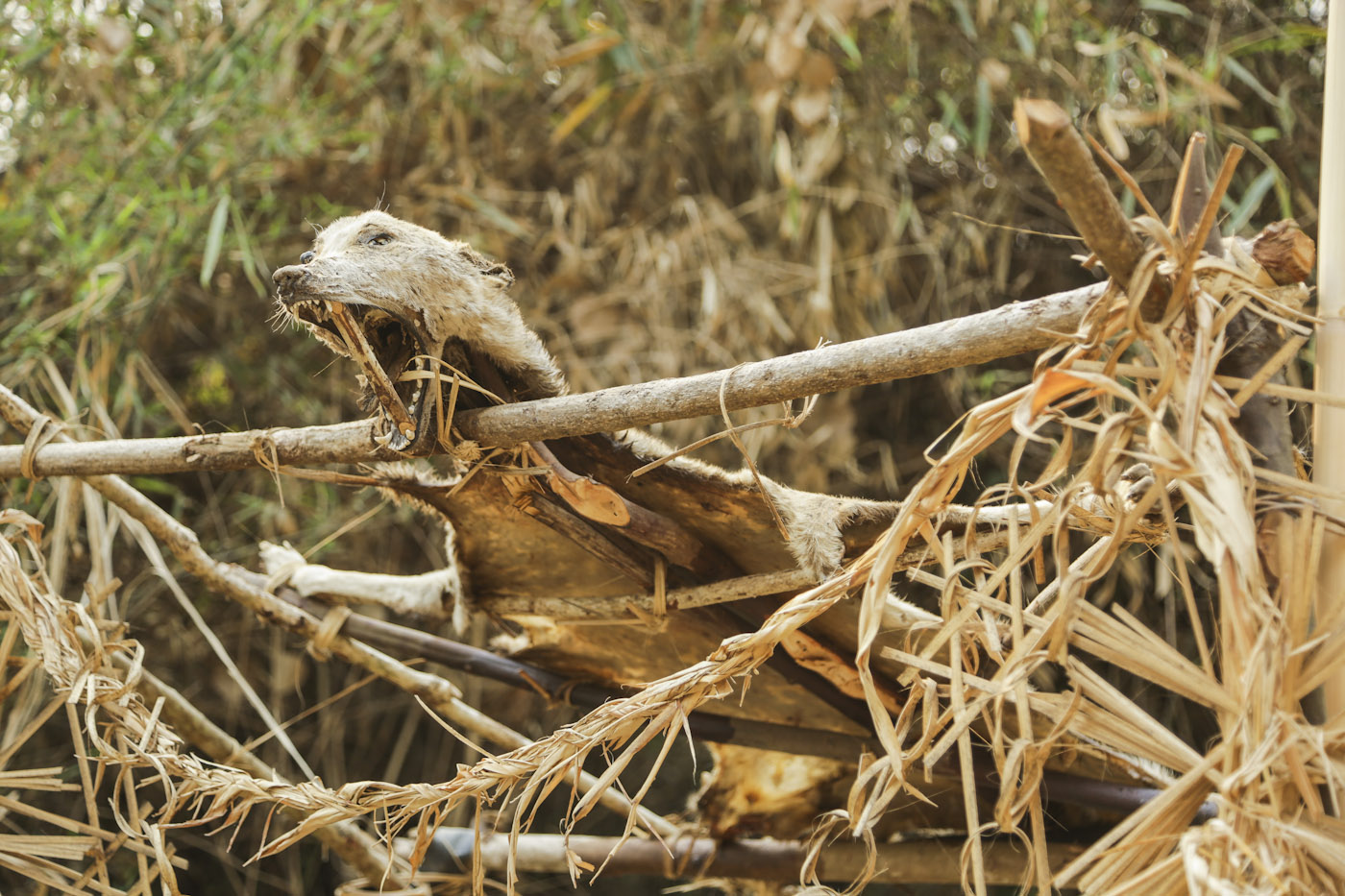
After pedalling out of the town of Muang Sing, along trails that took us through lonely rubber tree forests and sugar cane fields, we finally reached the first ethnic village, where a small group of ethnic Akha lived. The Akha are animists and worship their ancestors. Their villages are easily recognisable, because, the entrance to the village is usually dominated by a large wooden gate exhibiting the skin and skull of a dead dog, an indication of the boundary between the world of humans and that of spirits. It is strictly forbidden to touch the gate, since it protects the village from diseases, wild animals and criminals.
9. A Swing to Fly for One’s Freedom
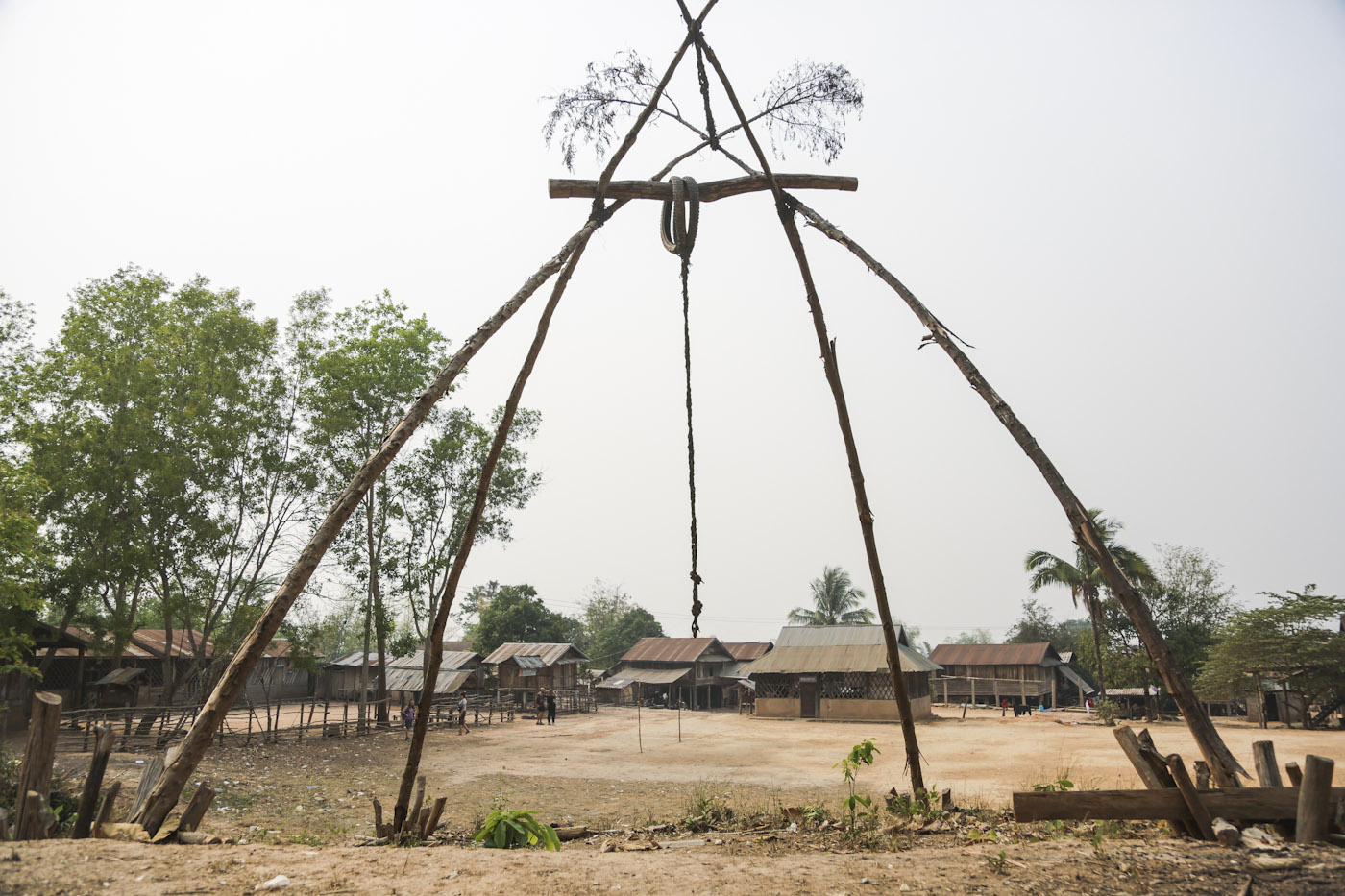
Another characteristic of Akha villages is a prominent swing that stands in the middle of the village. Contrary to what we first thought, it is not for the daily amusement of the kids. The swing of Akha villages is only used during the harvest festival, a period of revelry and celebration. It is a symbol of freedom. Historically the Akha have had to flee very often, victims of persecution and prejudice, so during the swing festival they celebrate their freedom by flying into the skies on their swing.
10. The Mysterious Sand Pyramids on the Beach
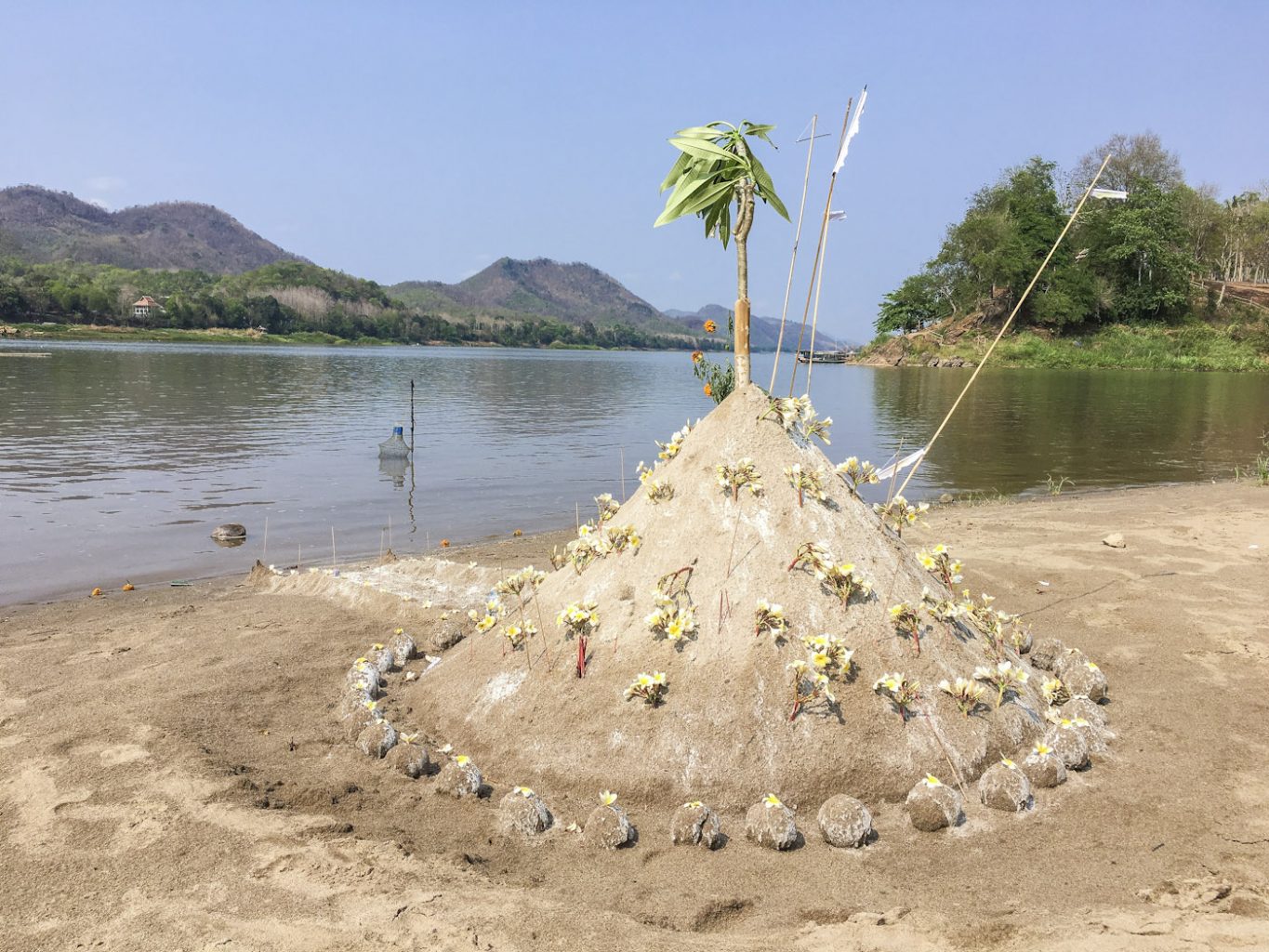
If you are in Laos and one day you get to see mysterious sand mounts on one of the riverine beaches of the country, don’t worry. These are no alien constructions. It is also not the result of kids’ sand castles. These are sand stupas, a pyramidical, temporary construction built during Pi Mai – Laos’ new year celebrations. They are made as offerings to the Buddhist monks as a way to earn merit, fortune and luck. Although most of the times they are built on the beach, directly where the sand is, sometimes, worshippers take the sand to the temple and build their pyramids there. Sand represents the mountain where the head of King Kabinlaphrom was kept – Phoukhao Kailat.
After the sand mount is made, they decorate it with flowers, incense and zodiac pictures. The mount is then sprinkled with perfumed water, previously blessed in the temple, in an important water ceremony also during Pi Mai.
11. The Enigmatic Crocodile Stone, Vat Phu (Champasak)
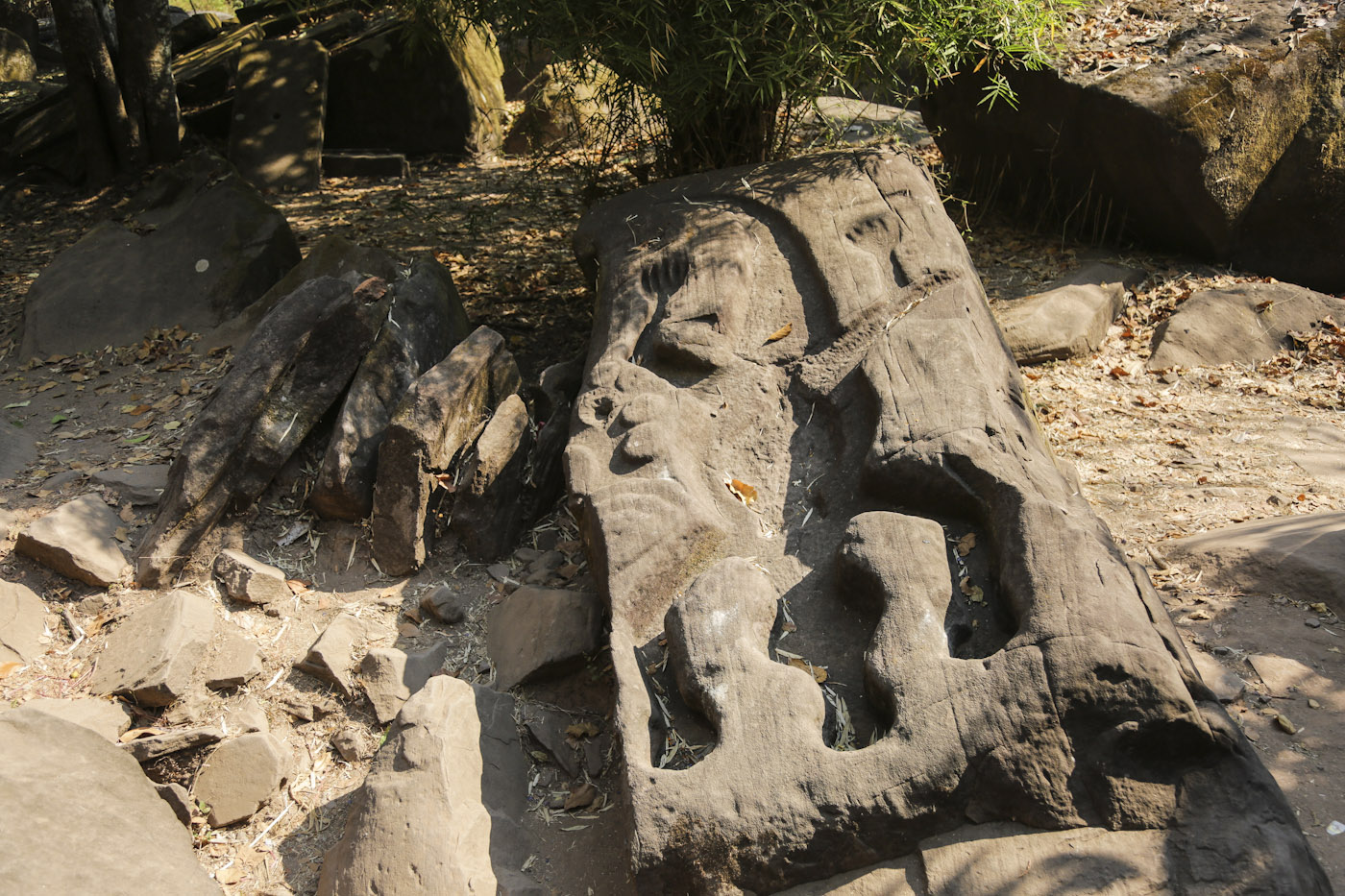
Next to the ancient ruins of the Khmer temple of Vat Phu, there is a boulder with a very mysterious carving of what resembles a crocodile shape (though with a fertile imagination, one can claim any other shape, including a human person). There’s a lot of speculation regarding what was the use of the stone. Considering its location, in a forest above a sacred temple, it could have a religious use or connotation. However, no other similar stone has been found in the area. Although crocodiles do exist in the region, they are far from being related to religion, therefore it is difficult to guess what could be its use.
Nevertheless some risk to believe that the stone could have been used as an altar during ceremonies in which a human body would be sacrificed. There are legends that say that a Chenla king (from the empire that ruled Southern Laos in the 5th century) would sit on the temple that existed where is now Vat Phu to pray to the spirits of the mountains and that he would offer them rice wine and the two most beautiful girls of the village… Could this be the stone where the girls were sacrificed?
12. The Abandoned Chaleun Cinema (Savannakhet)
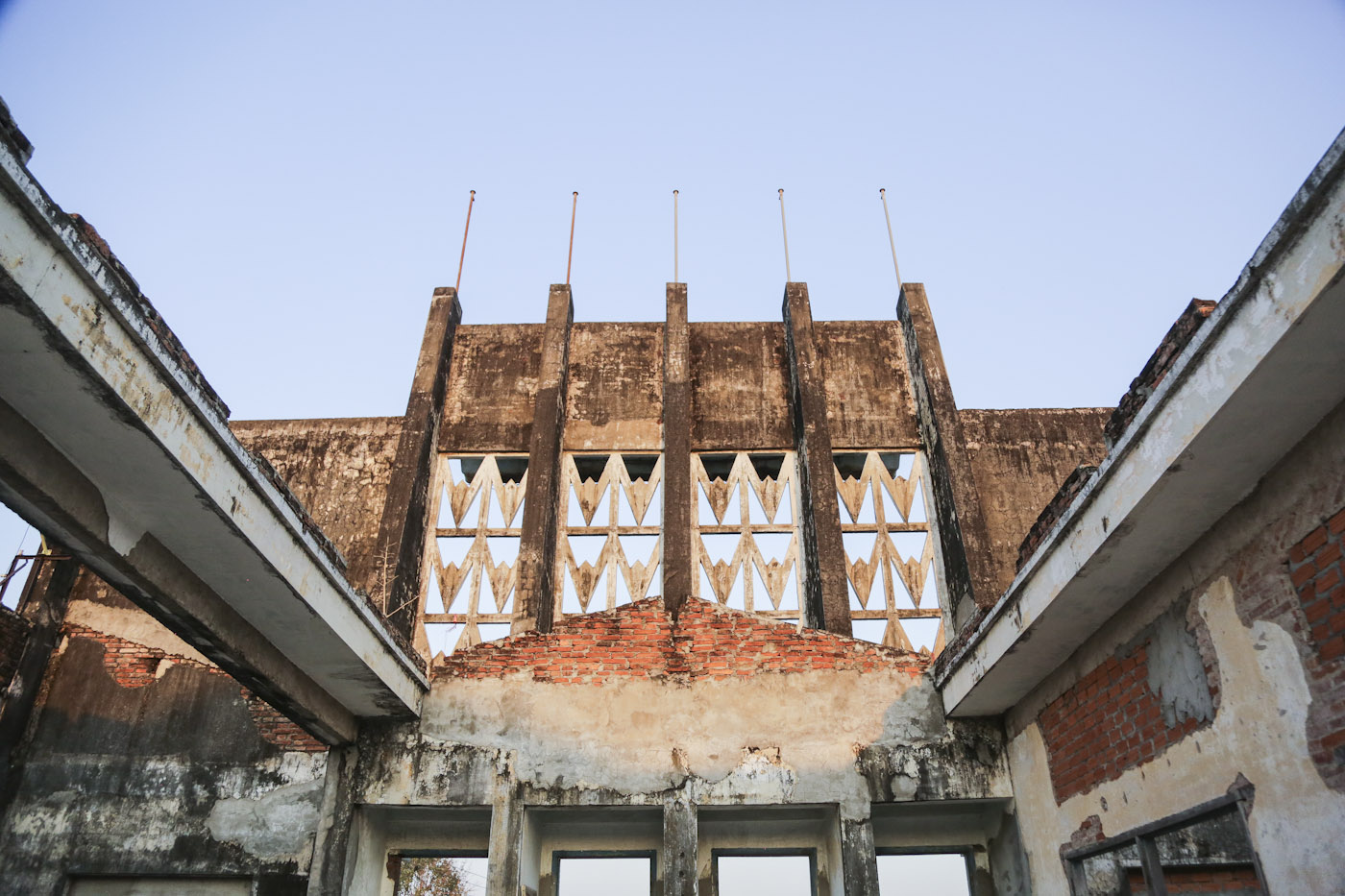
One of the buildings which has been abandoned and is in an advanced state of deterioration is the Lao Chaleun Cinema, which was probably built in the 1930s. Its ruins, specially the facade, still give an idea of what was once a beautiful Art Deco styled construction.
>> Read more about the abandoned cinema in Savannakhet
Despite the advanced dilapidation of the ruins, we visited its interior, being careful where we stepped our feet, because in some places on the first floor it looked like the ground could collapse any minute.
13. One of the Last Communist Countries
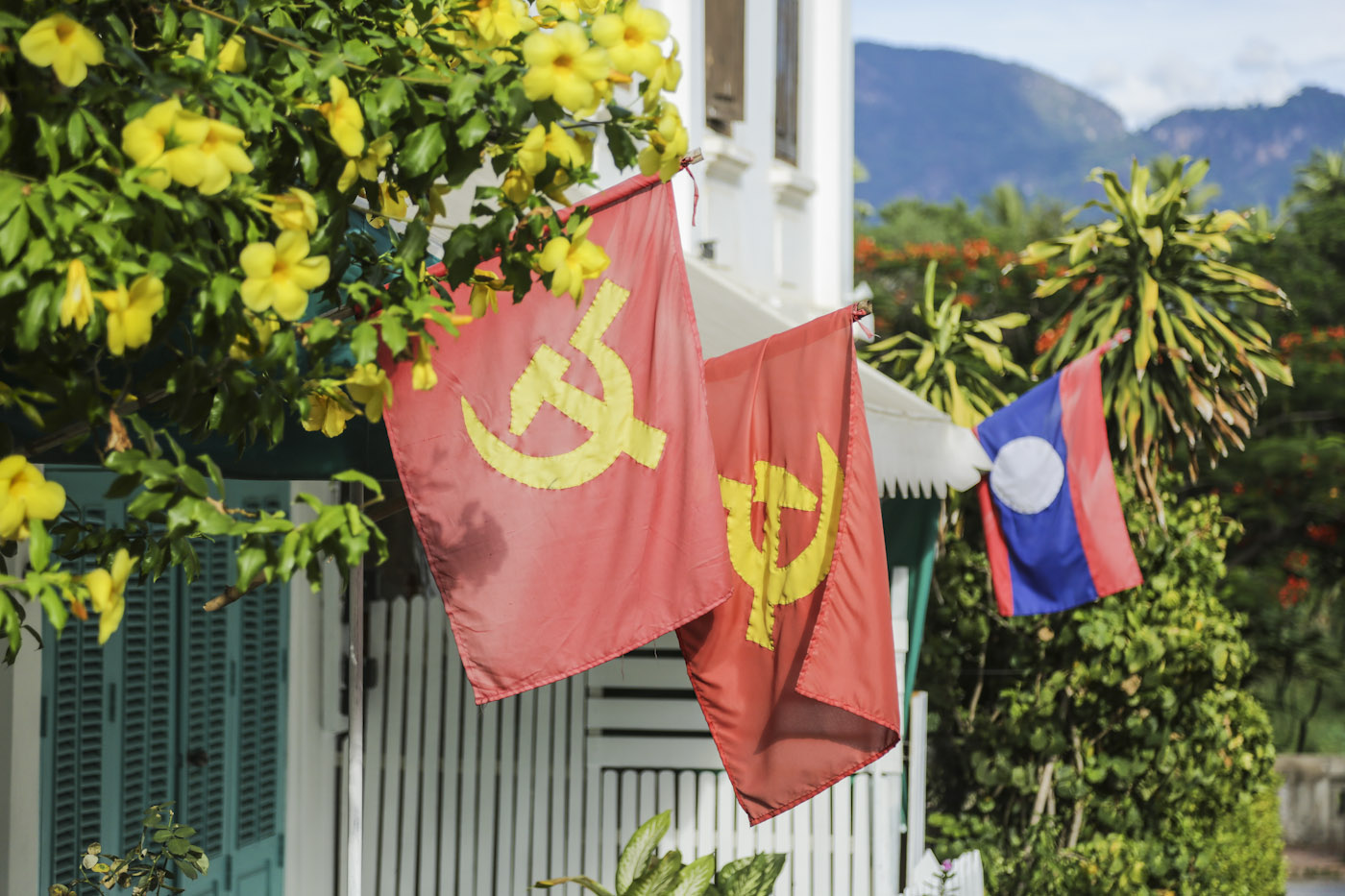
There are only five communist countries left in the world: North Korea, China, Cuba, Vietnam and Laos. In 1975, the royalist Lao government was overthrown by the Pathet Lao, who forced King Savang Vatthana to abdicate at the end of the civil war, establishing the Lao People’s Democratic Republic which has ruled ever since.
14. Ant Eggs as a Delicacy
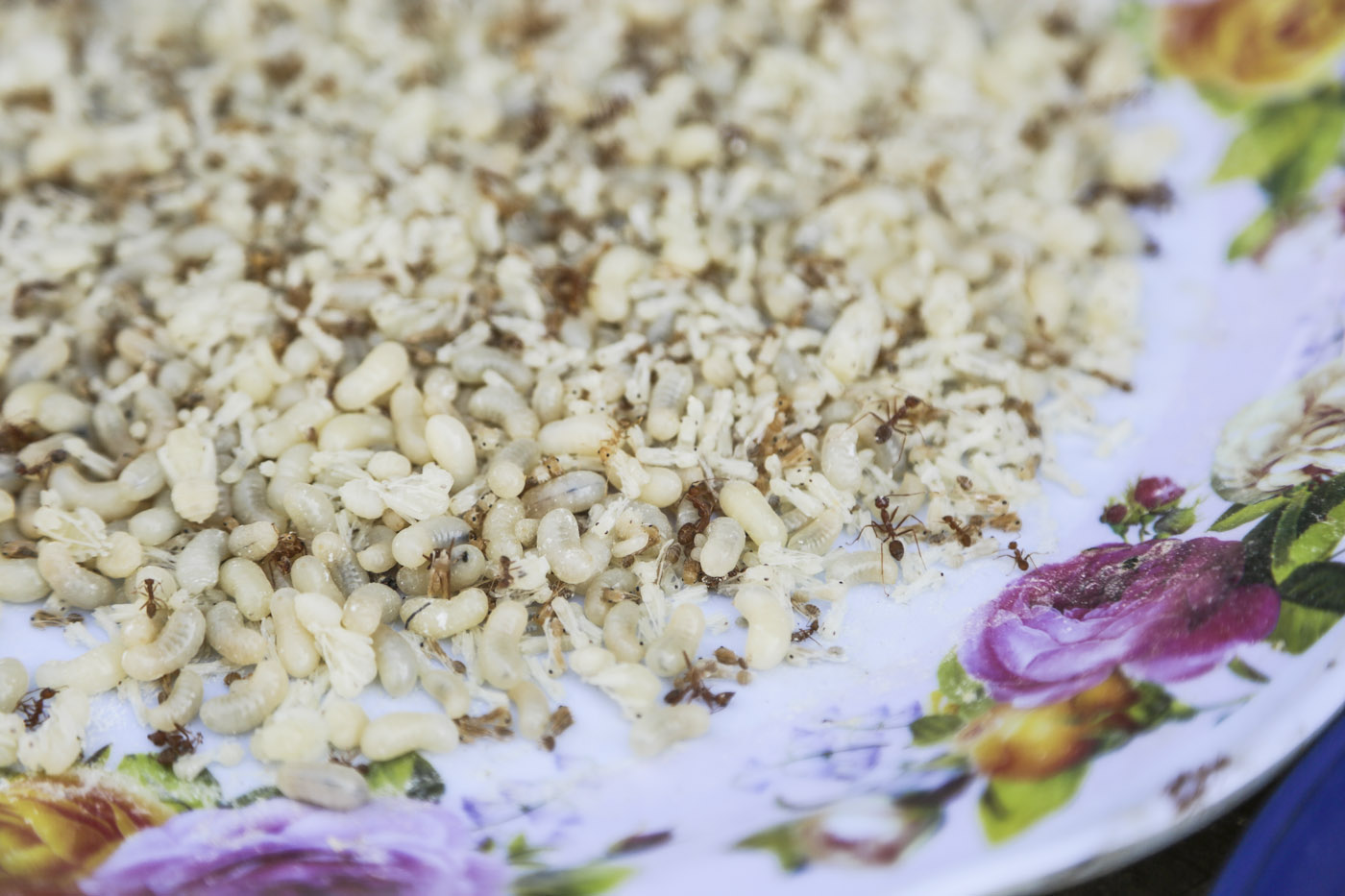
Ant eggs are a delicacy in Laos and are also a high protein dish. Not all ant eggs are good to eat though. The eggs that Lao people like eating are the ones from the weaver ants (also known and recognisable as the red ants). They are called weavers because they construct their nests by weaving the tree leaves together on top of the trees.
When we had a chance to finally try them (we had seen them on several occasions in the market, but were only tempted to eat them in one of Luang Prabang’s restaurants), we had the feeling there was not so much taste. If anything, we could taste the lemongrass and chilli with which they are prepared. There was some acidity on the after taste, and that is caused because of the ants’ preferred nutrition, which is mango. If you find the ant eggs difficult to start with, you can try the fried crickets or bamboo caterpillars, which are perhaps visually more tempting.
15. Hazardous Slash and Burn Agriculture
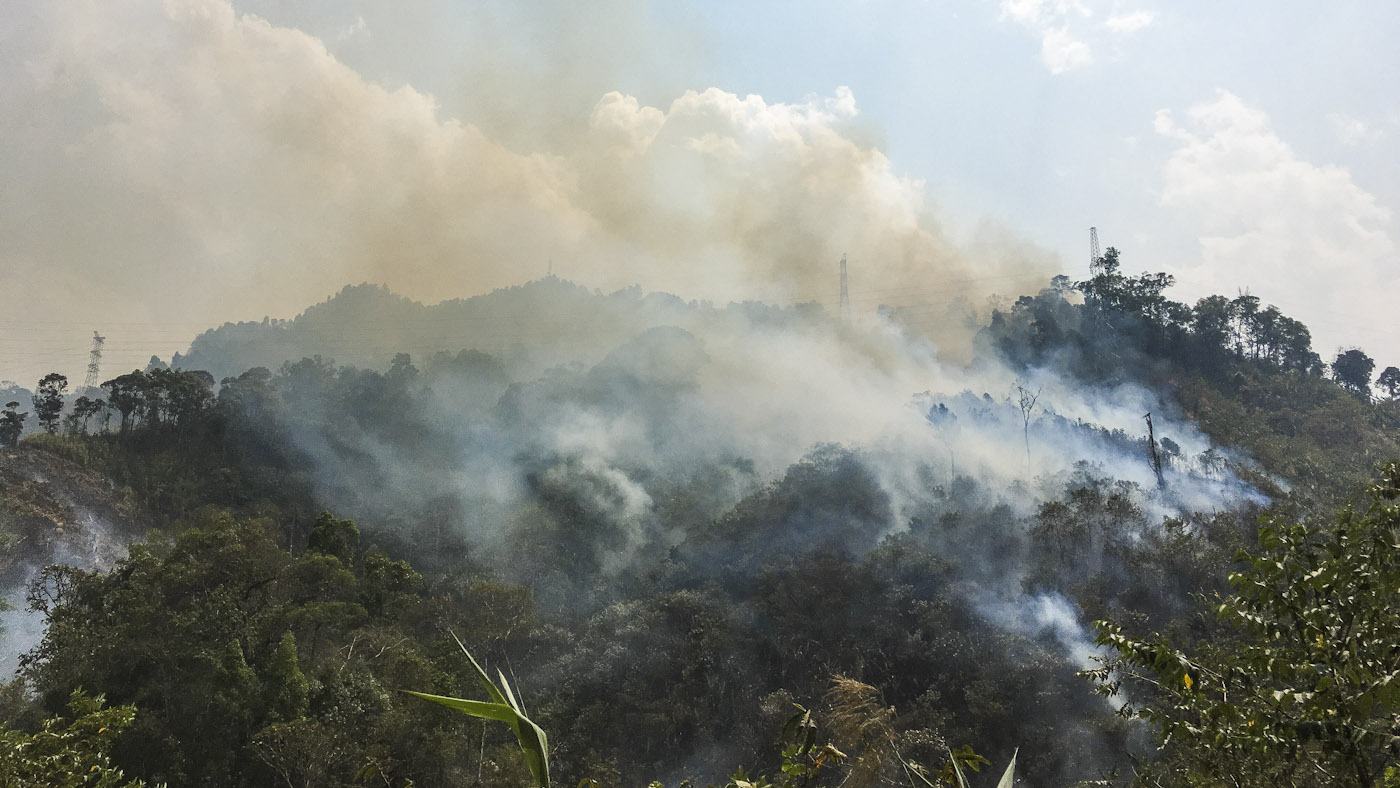
Those that visit Laos during the dry season in the months of March and April experience a desolate smog and severe air pollution. This state is caused by the practice of slash and burn agriculture. Every year, in this time of the year, farmers burn their fields so that the ashes fertilise their fields. After two or three years, that field is deplete of fertility, and so farmers need to move to another land. For that, farmers need to deforest new land, and they do that by burning the forest. So in both cases the farmers burn the land. Things can get even worse, and that’s when the fire gets our of control and burns much more land than the farmer first needed. When that happens, and because of the lack of high tech equipment or manpower, fire goes unextinguished for days.
Slash and Burn Agriculture is bad to the soil, which gets used until erosion as well as to the public health, because of the poor quality of the air. In some years the quality is so bad that the government advises people to stay indoors and wear masks if they need to go outside.
16. Bird Releasing, From Merit to Sin
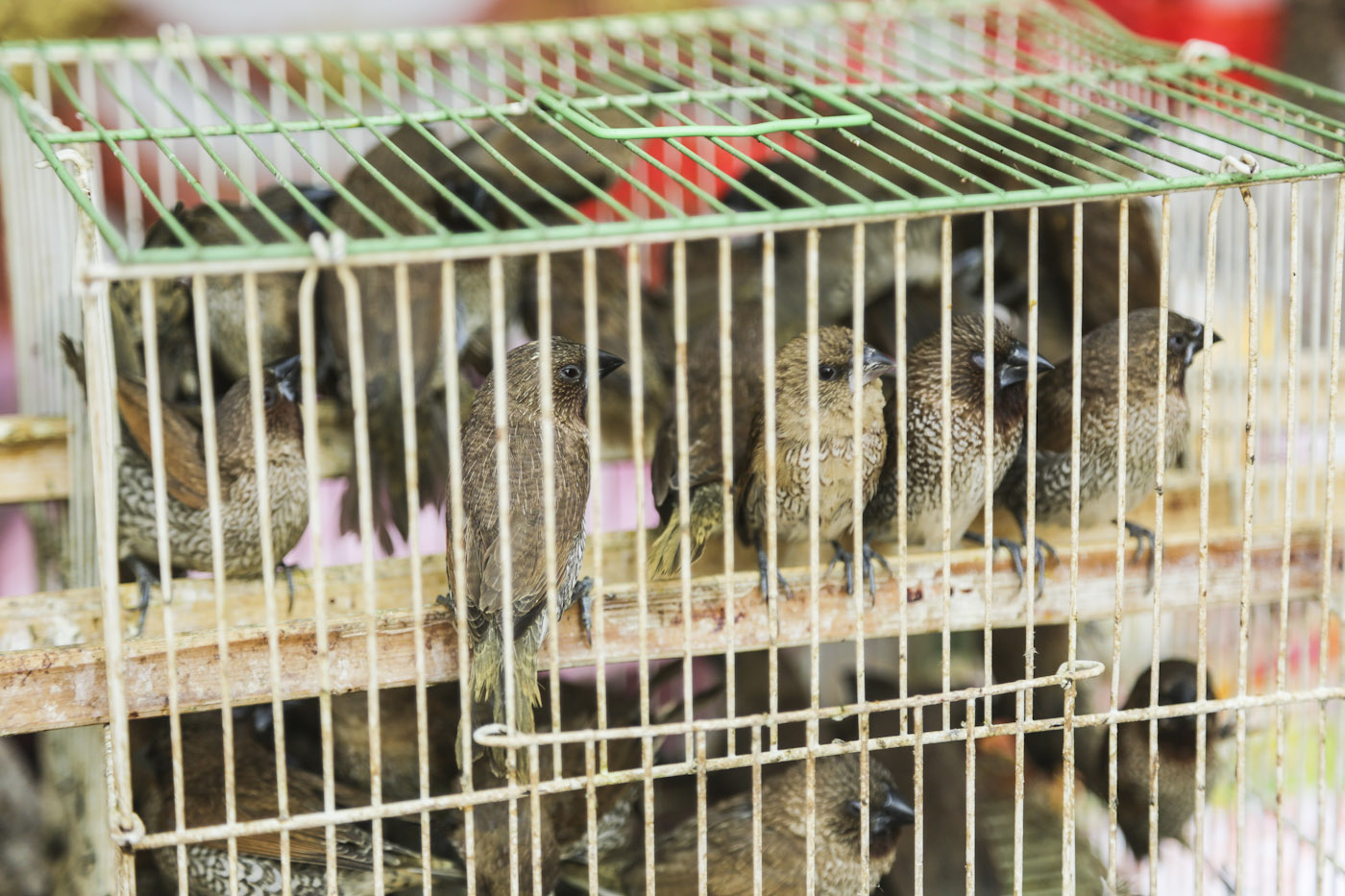
According to Buddhist precepts that regulate monastic life, one should not kill living things. Also, following Buddhist belief, releasing birds from cages is a kind act that is rewarded with good luck and fortune. For that reason, the practice of releasing birds is a popular Buddhist ceremony. Unfortunately, this search of merit for some has become a reason of sin for others, simply because, for someone to release a bird, a person had to imprison the animal.
For a couple of years now, many Buddhist temples have been raising awareness about this cruelty imposed on birds so that humans can reach merit, and have been discouraging this practice. However, it is still seen in many places in Laos. The best way to keep birds free is to stop buying their freedom.
17. Crossing a 7,500-Metre-Long Cave by Boat in Total Darkness
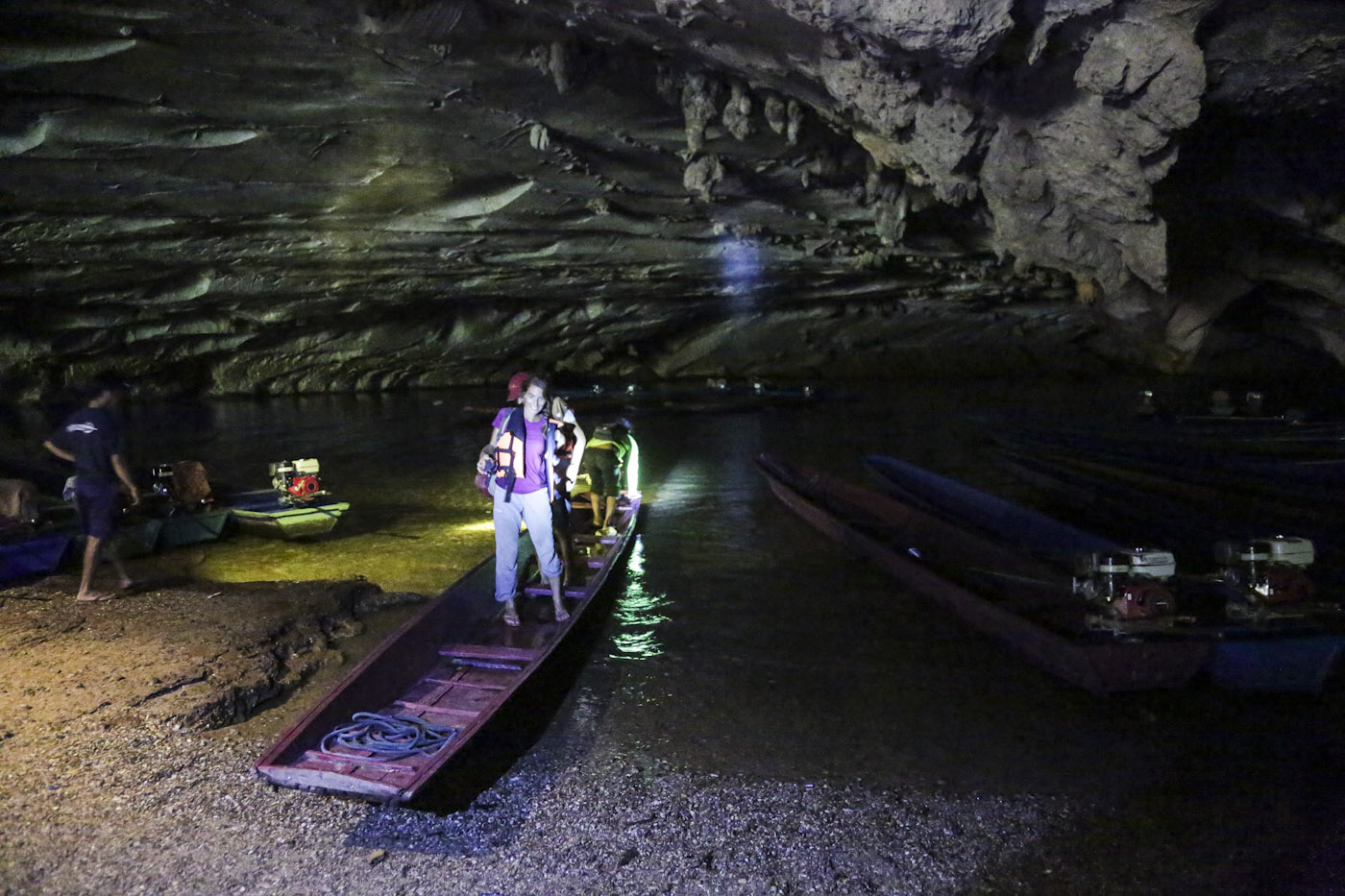
The Konglor cave is a 7,500-metre-long cave that can be explored on board a boat to cross the underground river, discovered in the sixteenth century. In 1920, when the population saw domestic ducks coming out of the cave, they realised the underground river must be connected to another village, so they began an expedition using a rowing boat. They searched for hours, in the pitch-black cave, which they believed was inhabited by spirits. The five volunteers, illuminated only by traditional torches, must have been terrified. Finally they reached the village of Natane. Today, our boat takes us there in about twenty minutes.
18. Thousands of Jars Scattered around a Field (Plain of Jars)
The plain of jars is an archeological site in Laos that holds one of the most important pre-historic sites in Southeast Asia. Imagine thousands of stone jars, ranging from one to three metres of height and weighing up to fourteen tons! When were they made and for what purpose are the questions that have been puzzling archeologists. A team of archeologists has concluded that the jars are dated to the Iron Age (1200 to 1000 BC) but are still uncertain about its purpose. As they found human bones inside some of the jars, they tend to relate them to burial practices, namely to cremation ceremonies. But they do not have enough evidence that proves these suspicions. According to Lao legend, the jars were created by Khun Cheung, the King of giants, who commanded the jars to brew lao lao rice wine after the victory of a very bloody battle.


